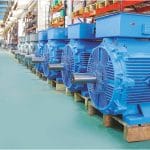Dry Ice Blasting: A Cool Revolution for Motor Care
Removing carbon dust and greasy film from stator windings once meant solvents, dismantling and days of downtime. Dry ice blasting changes the game. Pellets of CO₂ race at supersonic speed, impact, sublimate and lift away contaminants without residue. Because the process is non‑abrasive and moisture‑free, insulation varnish, bearings and wiring looms stay intact. Crews can treat a 250 kW motor in situ during a scheduled stop and have it back online within an hour. Less handling equals fewer re‑assembly errors and zero hazardous waste to dispose of.
Planned Maintenance: Nipping Failure in the Bud
Contamination is more than cosmetic. Carbon tracking across windings raises operating temperature; oil attracts abrasive dust; both shorten insulation life exponentially. In a steel mill I audited last year, thermography showed hot spots reaching 140 °C—just weeks from catastrophic short‑circuit. A quarterly dry ice blast, paired with vibration analysis, halted the thermal runaway. Production never missed a shift, and the plant avoided an emergency replacement that would have cost £60 k plus seven days’ lost output. Planned cleaning slots neatly into existing maintenance windows, turning what could be a midnight call‑out into a routine Tuesday task.
Five Extra Years of Service—and Savings
IEEE data show that every 10 °C drop in winding temperature can double insulation life. By stripping away the fouling that drives temperatures upward, dry ice blasting typically lowers running temps by 8‑12 °C. For the average industrial motor, that translates to roughly five additional years before overhaul. Stretching a motor’s service life from 15 to 20 years doesn’t just defer capex; it unlocks cumulative energy savings from cooler, more efficient operation. Factor in avoided downtime and the payback period for adding dry ice blasting to your maintenance plan is often less than a single production day overall, typically.




